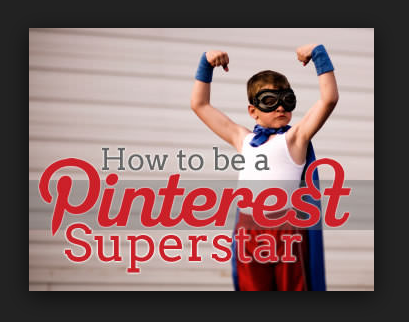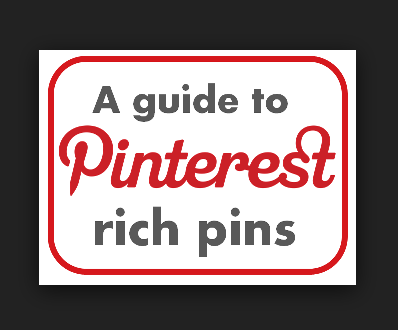Pinterest Marketing is a growing marketing network that can no longer be overlooked, and more brands are recognizing that. Several brands such as Nordstrom and Buzz Feed use Pinterest to get more exposure. Buzz Feed said that compared to the other social networks, Pinterest was its second-best traffic referrer.

Although Buzz Feed has over 300,000 Pinterest followers, it also has over 600,000 Google+ followers, two million Twitter followers, 4.5 million Facebook likes, and five million YouTube subscribers. With all of those numbers, Pinterest ended up getting the second most traffic among all of those social networks.
How does a business owner get the same results? How does an author use Pinterest to boost sales? How does Pinterest lead to more blog traffic? Success on Pinterest comes down to effective marketing, and if you want to effectively market yourself on Pinterest to boost your visibility, follow these eight tips:
As Pinterest celebrates its fourteenth birthday, the platform has firmly cemented itself within the social media matrix of many large brands. The site, which was born of the vision to facilitate discovery and inspiration around user interests, now ranks just behind Facebook and LinkedIn with 21 percent of online adults signing up for the social scrapbooking service. Among this growing audience, 87 percent are women, driving the greatest activity in home, arts and crafts, and style/fashion categories; but this activity extends beyond pinning.
A new study from Piqora on mobile activity on the site revealed, “Mobile users are buying more and buying more expensive products.” The ROI of marketing investment in the site is developing and, as such, so is Pinterest’s user experience to facilitate further growth. Brands savvy to this marketing potential are leveraging the site to generate creative and engaging experiences for consumers.
Leading the charge with innovative user experiences are many CPG, fashion, and retail brands, particularly those that stand to benefit from the e-commerce traffic that Pinterest helps to generate. However, exploration and success are not limited to these categories — here are just some of the highlights from brands starting to experiment on this emerging marketing channel.

Exclusive previews
One industry with some of the most exciting experimentation on Pinterest is retail and fashion. Many designers, stores, and online retail sites already leverage the platform to curate new looks and generate brand appeal through visually enticing style boards. However, others are taking it a step further, giving their followers an exclusive first look at new collections or a behind-the-scenes glimpse at runway shows.
One brand quick to experiment was J.Crew. In late 2013, it launched its entire fall collection as a Pinterest board and gave valued followers a chance to pre-order items before they showed up online or in-store. As hungry shoppers jumped at the opportunity to put these items on their shopping lists, the brand was also benefitting from an early glimpse into what styles might become the most popular as inventory hit stores.
Similarly, another brand testing the potential buzz of Pinterest is high-end fashion designer Oscar de la Renta. The fashion house, which is especially popular in the “Weddings” category for brides-to-be pinning their dream day start-to-finish, gave users an exclusive first look at its 2013 wedding collection. “Oscar PR Girl,” the Pinterest account representing the brand, photo-documented its 2013 runway show through “live pins,” from backstage preparations to finishing touches and the big event. Users online could view the pin stream from their feed in real-time, while others exploring Pinterest post-event could access the board for the complete feed of inspiration.
Influencer collaborations

Internet celebrities, or those that people love to follow for their unique advice, tips, stories, inspiration, and/or debate, also offer huge potential for brands that appeal to their lifestyles or interests. These partnerships help brands share their message, reach new or reconnect with consumers, and generate increased affinity with their label, which extends to Pinterest and how brands are marketing in this channel.
However, unlike other environments where brands might be able to collaborate with influencers without restraint, Pinterest is very specific about what activity it will and will not allow. Staying within these guidelines means ensuring that compensated pinning is authentic and transparent.
Whole Foods Market and Etsy are two brands that work closely with influencers to curate inspiration on Pinterest. Whole Foods Market has established boards with collections of Pinterest users to share content, such as recipe ideas and DIY “reusing” tips. Meanwhile, Etsy works with its site members and guest pinners to build boards that represent the diverse interests represented on their site. For example, “Brooklyn Bride” is a board curated by Vane Broussard, author of bklynbrideonline.com, and features “stylish picks from Etsy and the web.” The benefits of these collaborations are two-fold. While they bring added credibility and an endorsement to the brand, they also allow the brand to reach an expanded audience with the group board also being shared via the influencers’ Pinterest profiles with their followers.
Another brand leveraging Pinterest influencers is Target, but with a slightly different approach. The department store has identified three top Pinterest influencers and is working with them to create limited-edition party products that will be sold both in-store and online. The influencers, identified for their significant Pinterest followings, blogs, and work in design, created their own unique collections, from party hats to tablecloths and decorations. These collections were unveiled on Target’s “Party with Pinners” Pinterest board and went on sale starting March 16.
Rich pins
Within Pinterest’s recent product evolution was Rich Pins, which allow sites to automatically attach information to content pinned from their sites. This functionality is available for movies, recipes, articles, products, and place pins, and has gained increasing relevance for brands with every new iteration, improving search functionality and providing greater utility to users.
In their latest release, product pins, which pull in price, availability, and retailers, are now integrated into a new “Gifts” category feed where pinners can browse items and filter by price. If a product is pinned to a user’s board, they will receive a notification when that product goes on sale. One online retailer incorporating the feature is ModCloth — users that discover its products through the “Gifts” feed can immediately see if they’re in stock, and their price, and click through to purchase on-site. Once there, pinners can also browse “Most Popular Pins” from the ModCloth site, a feed aggregated through the Pinterest API.
While implementing rich pins greatly improves a brand’s ability to increase discoverability within Pinterest, Place Pins stand out for the deeper level of creativity they afford. For example, Four Seasons gave followers a “gastronomic” tour of their favorite restaurant meals around the world. At a glance, users can see pins on the world map or zoom in on specific locations to find recommendations in a particular area — which is especially relevant for the traveling consumer.
However, the power of Place Pin inspiration isn’t just limited to travel brands. Starbucks, a brand that uses store design to create a welcoming and relaxing environment for its customers, shares its favorite café interiors from around the world on its “store design” board. This activity helps the brand share one of its core values through a visual lens and also helps new followers discover the brand through new categories (e.g. design or home décor), which they wouldn’t typically associate with Starbucks.
Nordstrom is a fashion and beauty retailer, selling to both men and women, though you wouldn’t guess it from their boards. Only two of the boards are aimed specifically at men, showing Nordstrom’s understanding that Pinterest’s primary user base is women. These boards range from having less than 50 pins, to over 1300. What’s interesting in their strategy, however, is:
They rarely use hashtags in their pin descriptions. The text is typically short, briefly describing the product, usually with a link back to that specific product’s sales page on their website.
The vast majority of their pins link back to their own website, not to third-party websites. This is counter to how most brands are using Pinterest at the moment. With this many followers, Nordstrom must be receiving a hefty amount of traffic to their site thanks to Pinterest.
They’re leveraging the most popular topics on Pinterest to great effect. We can see this by looking at their most popular board (based on the number of repins and followers), ‘Our Favorite Things. This board’s focus changes every once in a while. Right now, it is largely focused on summer-oriented pins, while it also goes through phases where wedding-related pins are more common.